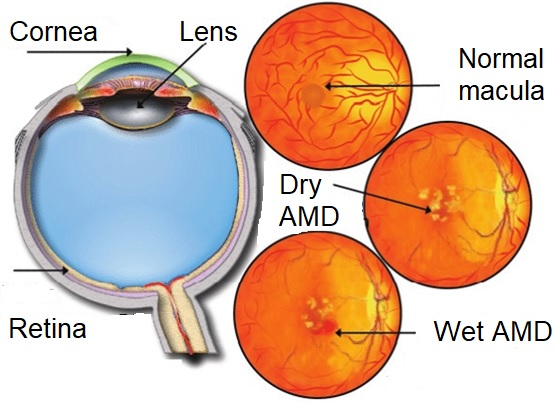Age related macular degeneration

Frequency and symptoms
Age related macular degeneration (AMD) is the most common cause of blindness in developed countries. Approximately 5% of the population after 70 suffers from advanced age-related maculopathy which initially causes distortion of objects (metamorphopsia).

Causes
The main essentially cause of the disease is old age. In recent years it has also found a link between the disease and arterial hypertension and smoking. During the progression of the disease, atrophy occurs as well as deposits of lipids and albumins in and under the retina (drusen) which make it difficult to exchange and transfer important substances between the retina and the underlying choroid. There may be accumulation of fluid under the retina in the macular area as well as the formation of new vessels that develop from the choroid to the retina.
Diagnosis
t is important that the disease is diagnosed as quickly as possible. With the so-called Amsler test the patient himself can draw useful conclusions in a relatively simple way. In case of lesions in the macular area it is necessary to perform OCT angiography or more rarely more fluoroscein angiography in which after bilateral dilation of the pupil by instillation of drops is performed intravenous administration of fluorescein and taking photos from the macular area.
OCT angiography of normal eye

OCT Angiography of a patient with wet, age-related macular degeneration

Therapy
The treatment of the dry form of age-related macular degeneration lies in the systematic intake of substances necessary in its function such as vitamins and elements like Lutein, Zeaxanthin, Vitamin C, Vitamin E, Zinc, Selenium etc.
In the case of a wet form of age-related macular degeneration, injections of anti-VEGF agents take place in the eye globe and specifically in the vitreous area.
Intravitreal injection of medicine

Restoration
Despite the development in some cases, the only assistance that can be offered remains the adaptation of low-vision aids.

